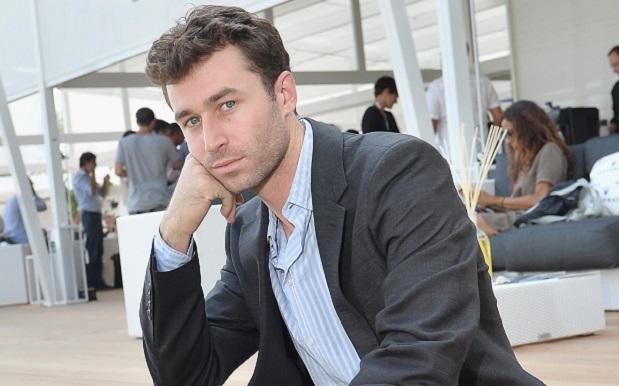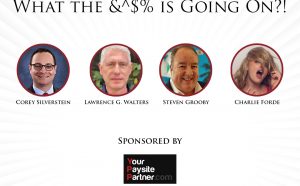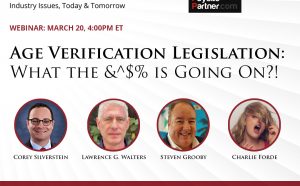I keep hearing rumors about an industry lawyer making threats of defamation suits against people that come out against Deen. I asked a top industry legal expert for their opinion and was offered this:
For those who would love to understand the jury instructions for defamation and how the defense of truth works in our court system, take a look at the jury instructions that would be used should James Deen decide to sue one of these women who have come forward to share their stories of assault and rape.
So, would James claim that the defamatory statement was that he assaulted a woman? Would he be able to “prove” that the statement was false? James is likely a limited public figure considering his acting career, his sex columns, and his public persona as the “it guy” in porn.
You be the judge.
Jury Instructions that are Relevant to James Deen
1700. Defamation per se—Essential Factual Elements (Public Officer/Figure and Limited Public Figure)
[Name of plaintiff] claims that [name of defendant] harmed [him/her] by making [one or more of] the following statement(s): [list all claimed per se defamatory statements]. To establish this claim, [name of plaintiff] must prove that all of the following are more likely true than not true:
Liability
1. That [name of defendant] made [one or more of] the statement(s) to [a person/persons] other than [name of plaintiff];
2. That [this person/these people] reasonably understood that the statement(s) [was/were] about [name of plaintiff];
3. [That [this person/these people] reasonably understood the statement(s) to mean that [insert ground(s) for defamation per se, e.g., “[name of plaintiff] had committed a crime”]]; and
4. That the statement(s) [was/were] false.
In addition, [name of plaintiff] must prove by clear and convincing evidence that [name of defendant] knew the statement(s) [was/were] false or had serious doubts about the truth of the statement(s).
Actual Damages
If [name of plaintiff] has proved all of the above, then [he/she] is entitled to recover [his/her] actual damages if [he/she] proves that [name of defendant]’s wrongful conduct was a substantial factor in causing any of the following:
a. Harm to [name of plaintiff]’s property, business, trade, profession, or occupation;
b. Expenses [name of plaintiff] had to pay as a result of the defamatory statements;
c. Harm to [name of plaintiff]’s reputation; or
d. Shame, mortification, or hurt feelings.
Assumed Damages
Even if [name of plaintiff] has not proved any actual damages for harm to reputation or shame, mortification or hurt feelings, the law nonetheless assumes that [he/she] has suffered this harm. Without presenting evidence of damage, [name of plaintiff] is entitled to receive compensation for this assumed harm in whatever sum you believe is reasonable. You must award at least a nominal sum, such as one dollar.
Punitive Damages
[Name of plaintiff] may also recover damages to punish [name of defendant] if [he/she] proves by clear and convincing evidence that [name of defendant] acted with malice, oppression, or fraud.
[For specific provisions, see CACI Nos. 3940—3949.]
New September 2003; Revised April 2008
Directions for Use
Special verdict form CACI No. VF-1700, Defamation per se (Public Off?cer/ Figure and Limited Public Figure), should be used in this type of case.
Use the bracketed element 3 only if the statement is not defamatory on its face (i.e., if the judge has not determined that the statement is defamatory as a matter of law). For statutory grounds of defamation per se, see Civil Code sections 45 (libel) and 46 (slander). Note that certain specific grounds of libel per se have been defined by case law.
Sources and Authority
• Civil Code section 44 provides:
Defamation is effected by either of the following:
(a) Libel.
(b) Slander.
• Civil Code section 45 provides: “Libel is a false and unprivileged publication by writing, printing, picture, effigy, or other fixed representation to the eye, which exposes any person to hatred, contempt, ridicule, or obloquy, or which causes him to be shunned or avoided, or which has a tendency to injure him in his occupation.”
• Civil Code section 45a provides: “A libel which is defamatory of the plaintiff without the necessity of explanatory matter, such as an inducement, innuendo or other extrinsic fact, is said to be a libel on its face. Defamatory language not libelous on its face is not actionable unless the plaintiff alleges and proves that he has suffered special damage as a proximate result thereof. Special damage is defined in Section 48a of this code.”
• Civil Code section 46 provides:
Slander is a false and unprivileged publication, orally uttered, and also communications by radio or any mechanical or other means which:
1. Charges any person with crime, or with having been indicted, convicted, or punished for crime;
2. Imputes in him the present existence of an infectious, contagious, or loathsome disease;
3. Tends directly to injure him in respect to his office, profession, trade or business, either by imputing to him general disqualification in those respects which the office or other occupation peculiarly requires, or by imputing something with reference to his office, profession, trade, or business that has a natural tendency to lessen its profits;
4. Imputes to him impotence or a want of chastity; or
5. Which, by natural consequence, causes actual damage.
• Section 558 of the Restatement Second of Torts provides: To create liability for defamation there must be:
(a) a false and defamatory statement concerning another;
(b) an unprivileged publication to a third party;
(c) fault amounting at least to negligence on the part of the publisher; and
(d) either actionability of the statement irrespective of special harm or the existence of special harm caused by the publication.
• “Defamation is an invasion of the interest in reputation. The tort involves the intentional publication of a statement of fact that is false, unprivileged, and has a natural tendency to injure or which causes special damage.” (Smith v. Maldonado (1999) 72 Cal.App.4th 637, 645 [85 Cal.Rptr.2d 397].)
• “The elements of a defamation claim are (1) a publication that is (2) false, (3) defamatory, (4) unprivileged, and (5) has a natural tendency to injure or causes special damage.” (Wong v. Jing (2010) 189 Cal.App.4th 1354, 1369 [117 Cal.Rptr.3d 747].)
• California does not follow the majority rule, which is that all libel is actionable per se. If the court determines that the statement is reasonably susceptible to a defamatory interpretation, it is for the jury to determine if a defamatory meaning was in fact conveyed to a listener or reader. (Kahn v. Bower (1991) 232 Cal.App.3d 1599, 1608 [284 Cal.Rptr. 244].)
• A plaintiff is not required to allege special damages if the statement is libelous per se (either on its face or by jury finding). (Selleck v. Globe Int’l, Inc. (1985) 166 Cal.App.3d 1123, 1130 [212 Cal.Rptr. 838].)
• “A slander that falls within the first four subdivisions of Civil Code section 46 is slander per se and requires no proof of actual damages. A slander that does not fit into those four subdivisions is slander per quod, and special damages are required for there to be any recovery for that slander.” (The Nethercutt Collection v. Regalia (2009) 172 Cal.App.4th 361, 367 [90 Cal.Rptr.3d 882], internal citations omitted.)
• “With respect to slander per se, the trial court decides if the alleged statement falls within Civil Code section 46, subdivisions 1 through 4. It is then for the trier of fact to determine if the statement is defamatory. This allocation of responsibility may appear, at first glance, to result in an overlap of responsibilities because a trial court determination that the statement falls within those categories would seemingly suggest that the statement, if false, is necessarily defamatory. But a finder of fact might rely upon extraneous evidence to conclude that, under the circumstances, the statement was not defamatory.” (The Nethercutt Collection, supra, 172 Cal.App.4th at pp. 368-369.)
• “ ‘ “The sine qua non of recovery for defamation . . . is the existence of falsehood.” . . . Because the statement must contain a provable falsehood, courts distinguish between statements of fact and statements of opinion for purposes of defamation liability. Although statements of fact may be actionable as libel, statements of opinion are constitutionally protected…’ That does not mean that statements of opinion enjoy blanket protection. On the contrary, where an expression of opinion implies a false assertion of fact, the opinion can constitute actionable defamation. The critical question is not whether a statement is fact or opinion, but ‘ “whether a reasonable fact finder could conclude the published statement declares or implies a provably false assertion of fact.” ’ ” (Wong, supra, 189 Cal.App.4th at p. 1370, internal citations omitted.)
• “ ‘To determine whether a statement is actionable fact or nonactionable opinion, courts use a totality of the circumstances test of whether the statement in question communicates or implies a provably false statement of fact… Under the totality of the circumstances test, “[f]irst, the language of the statement is defamatory. This allocation of responsibility may appear, at first glance, to result in an overlap of responsibilities because a trial court determination that the statement falls within those categories would seemingly suggest that the statement, if false, is necessarily defamatory. But a finder of fact might rely upon extraneous evidence to conclude that, under the circumstances, the statement was not defamatory.” (The Nethercutt Collection, supra, 172 Cal.App.4th at pp. 368-369.)
• “ ‘ “The sine qua non of recovery for defamation . . . is the existence of falsehood.” . . . Because the statement must contain a provable falsehood, courts distinguish between statements of fact and statements of opinion for purposes of defamation liability. Although statements of fact may be actionable as libel, statements of opinion are constitutionally protected…’ That does not mean that statements of opinion enjoy blanket protection. On the contrary, where an expression of opinion implies a false assertion of fact, the opinion can constitute actionable defamation. The critical question is not whether a statement is fact or opinion, but ‘ “whether a reasonable fact finder could conclude the published statement declares or implies a provably false assertion of fact.” ’ ” (Wong, supra, 189 Cal.App.4th at p. 1370, internal citations omitted.)
• “ ‘To determine whether a statement is actionable fact or nonactionable opinion, courts use a totality of the circumstances test of whether the statement in question communicates or implies a provably false statement of fact… Under the totality of the circumstances test, “[f]irst, the language of the statement is examined. For words to be defamatory, they must be understood in a defamatory sense… [¶ ] Next, the context in which the statement was made must be considered.” . . .’ ” (Wong, supra, 189 Cal.App.4th at p. 1370.)
• “Whether a challenged statement ‘declares or implies a provable false assertion of fact is a question of law for the court to decide . . . , unless the statement is susceptible of both an innocent and a libelous meaning, in which case the jury must decide how the statement was understood.’ ” (Overhill Farms, Inc. v. Lopez (2010) 190 Cal.App.4th 1248, 1261 [119 Cal.Rptr.3d 127].)
• “[T]he jury was instructed that if it found that defendant published matter that was defamatory on its face and it found by clear and convincing evidence that defendant knew the statement was false or published it in reckless disregard of whether it was false, then the jury ‘also may award plaintiff presumed general damages.’ Presumed damages ‘are those damages that necessarily result from the publication of defamatory matter and are presumed to exist. They include reasonable compensation for loss of reputation, shame, mortification, and hurt feeling. No definite standard or method of calculation is prescribed by law by which to fix reasonable compensation for presumed damages, and no evidence of actual harm is required. Nor is the opinion of any witness required as to the amount of such reasonable compensation. In making an award for presumed damages, you shall exercise your authority with calm and reasonable judgment and the damages you fix shall be just and reasonable in the light of the evidence. You
• To show reckless disregard, “[t]here must be sufficient evidence to permit the conclusion that the defendant in fact entertained serious doubts as to the truth of his publication. Publishing with such doubts shows reckless disregard for truth or falsity and demonstrates actual malice.” (St. Amant, supra, 390 U.S. at p. 731.)
• “Although the issue turns on the subjective good faith of the defendant, the plaintiff may attempt to prove reckless disregard for truth by circumstantial evidence. ‘A failure to investigate, anger and hostility toward the plaintiff, reliance upon sources known to be unreliable, or known to be biased against the plaintiff—such factors may, in an appropriate case, indicate that the publisher himself had serious doubts regarding the truth of his publication.’ ” (Copp v. Paxton, (1996) 45 Cal.App.4th 829, 847 [52 Cal.Rptr.2d 831], internal citations omitted, quoting Reader’s Digest Assn., supra, 37 Cal.3d at p. 258, footnote omitted.)
• “An entity other than a natural person may be libeled.” (Live Oak Publishing Co., supra, 234 Cal.App.3d at p. 1283.)
Cal.App.3d 1277, 1284 [286 Cal.Rptr. 198], internal citations omitted.)
• Whether a plaintiff in a defamation action is a public figure is a question of law for the trial court. (Reader’s Digest Assn. v. Superior Court (1984) 37 Cal.3d 244, 252 [208 Cal.Rptr. 137, 690 P.2d 610].) “The question whether a plaintiff is a public figure is to be determined by the court, not the jury.” (Stolz v. KSFM 102 FM (1994) 30 Cal.App.4th 195, 203 [35 Cal.Rptr.2d 740], internal citation omitted.)
• “To qualify as a limited purpose public figure, a plaintiff ‘must have undertaken some voluntary [affirmative] act[ion] through which he seeks to influence the resolution of the public issues involved.’ ” (Rudnick v. McMillan (1994) 25 Cal.App.4th 1183, 1190 [31 Cal.Rptr.2d 193]; see also Mosesian v. McClatchy Newspapers (1991) 233 Cal.App.3d 1685, 1689 [285 Cal.Rptr. 430].)
• “The First Amendment limits California’s libel law in various respects. When, as here, the plaintiff is a public figure, he cannot recover unless he proves by clear and convincing evidence that the defendant published the defamatory statement with actual malice, i.e., with ‘knowledge that it was false or with reckless disregard of whether it was false or not.’ Mere negligence does not suffice. Rather, the plaintiff must demonstrate that the author ‘in fact entertained serious doubts as to the truth of his publication,’ or acted with a ‘high degree of awareness of . . . probable falsity.’ ” (Masson v. New Yorker Magazine (1991) 501 U.S. 496, 510 [111 S.Ct. 2419, 115 L.Ed.2d 447], internal citations omitted; see St. Amant v. Thompson (1968) 390 U.S. 727, 731 [88 S.Ct. 1323, 20 L.Ed.2d 262]; New York Times v. Sullivan (1964) 376 U.S. 254, 279—280 [84 S.Ct. 710, 11 L.Ed.2d 686].)
• The New York Times v. Sullivan standard applies to private individuals with respect to presumed or punitive damages if the statement involves a matter of public concern. (Gertz v. Robert Welch, Inc. (1974) 418 U.S. 323, 349 [94 S.Ct. 2997, 41 L.Ed.2d 789].)
• “California . . . permits defamation liability so long as it is consistent with the requirements of the United States Constitution.” (Melaleuca, Inc. v. Clark (1998) 66 Cal.App.4th 1344, 1359 [78 Cal.Rptr.2d 627], citing Brown v. Kelly Broadcasting Co. (1989) 48 Cal.3d 711, 740—742 [257 Cal.Rptr. 708, 771 P.2d 406].)
• “Actual malice under the New York Times standard should not be confused with the concept of malice as an evil intent or a motive arising from spite or ill will… In place of the term actual malice, it is better practice that jury instructions refer to publication of a statement with knowledge of falsity or reckless disregard as to truth or falsity.” (Masson, supra, 501 U.S. at pp. 510—511, internal citations omitted.)
• Actual malice “does not require that the reporter hold a devout belief in the truth of the story being reported, only that he or she refrain from either reporting a story he or she knows to be false or acting in reckless disregard of the truth.” (Jackson, supra, 68 Cal.App.4th at p. 35.)
• “The law is clear [that] the recklessness or doubt which gives rise to actual or constitutional malice is subjective recklessness or doubt.” (Melaleuca, Inc., supra, 66 Cal.App.4th at p. 1365.)
• To show reckless disregard, “[t]here must be sufficient evidence to permit the conclusion that the defendant in fact entertained serious doubts as to the truth of his publication. Publishing with such doubts shows reckless disregard for truth or falsity and demonstrates actual malice.” (St. Amant, supra, 390 U.S. at p. 731.)
• “Although the issue turns on the subjective good faith of the defendant, the plaintiff may attempt to prove reckless disregard for truth by circumstantial evidence. ‘A failure to investigate, anger and hostility toward the plaintiff, reliance upon sources known to be unreliable, or known to be biased against the plaintiff—such factors may, in an appropriate case, indicate that the publisher himself had serious doubts regarding the truth of his publication.’ ” (Copp v. Paxton, (1996) 45 Cal.App.4th 829, 847 [52 Cal.Rptr.2d 831], internal citations omitted, quoting Reader’s Digest Assn., supra, 37 Cal.3d at p. 258, footnote omitted.)
• “An entity other than a natural person may be libeled.” (Live Oak Publishing Co., supra, 234 Cal.App.3d at p. 1283.)
1720. Affirmative Defense—Truth
[Name of defendant] is not responsible for [name of plaintiff]’s harm, if any, if [he/she] proves that [his/her] statement(s) about [name of plaintiff] [was/were] true. [Name of defendant] does not have to prove that the statement(s) [was/were] true in every detail, so long as the statement(s) [was/were] substantially true.
New September 2003; Revised October 2008
Directions for Use
This instruction is to be used only in cases involving private plaintiffs on matters of private concern. In cases involving public figures or matters of public concern, the burden of proving falsity is on the plaintiff.
Sources and Authority
• Section 581A of the Restatement Second of Torts provides: “One who publishes a defamatory statement of fact is not subject to liability for defamation if the statement is true.”
• “Truth, of course, is an absolute defense to any libel action. In order to establish the defense, the defendant need not prove the literal truth of the allegedly libelous accusation, so long as the imputation is substantially true so as to justify the ‘gist or sting’ of the remark.” (Campanelli v. Regents of Univ. of Cal. (1996) 44 Cal.App.4th 572, 581—582 [51 Cal.Rptr.2d 891], internal citations omitted.)







You guys should go for it if he is not a rapist.